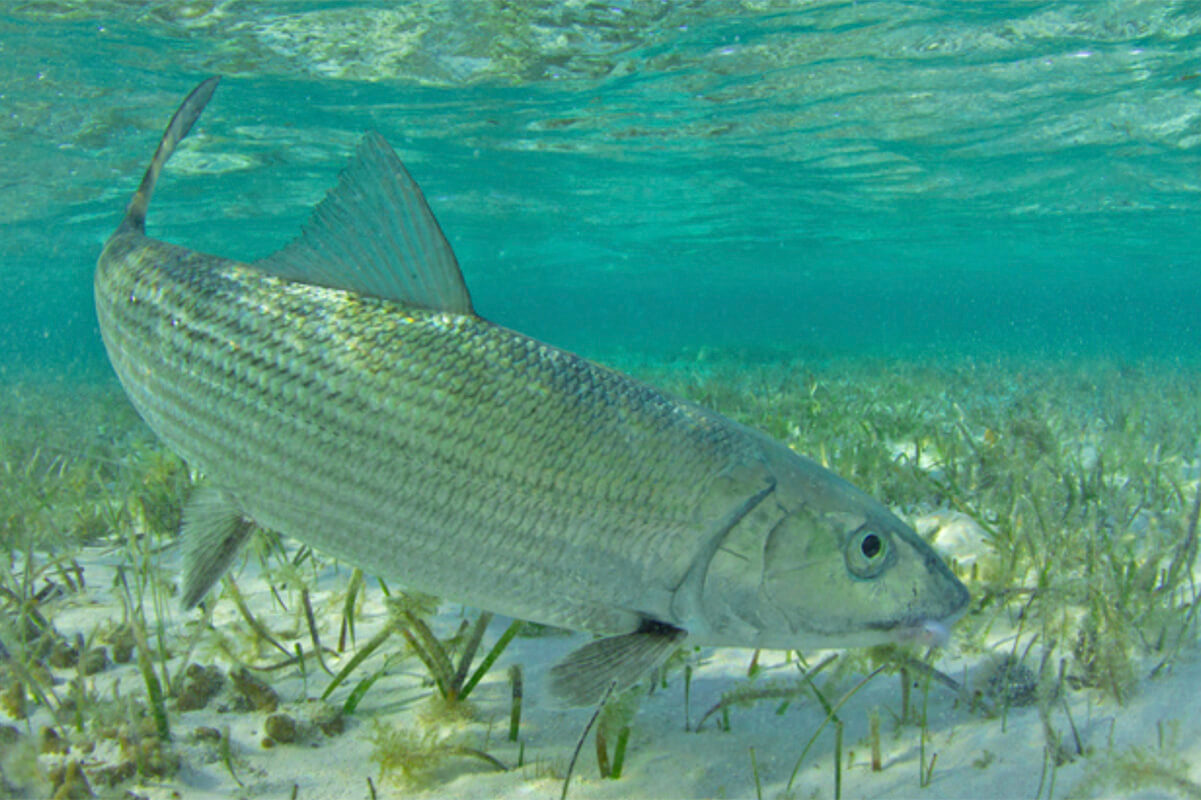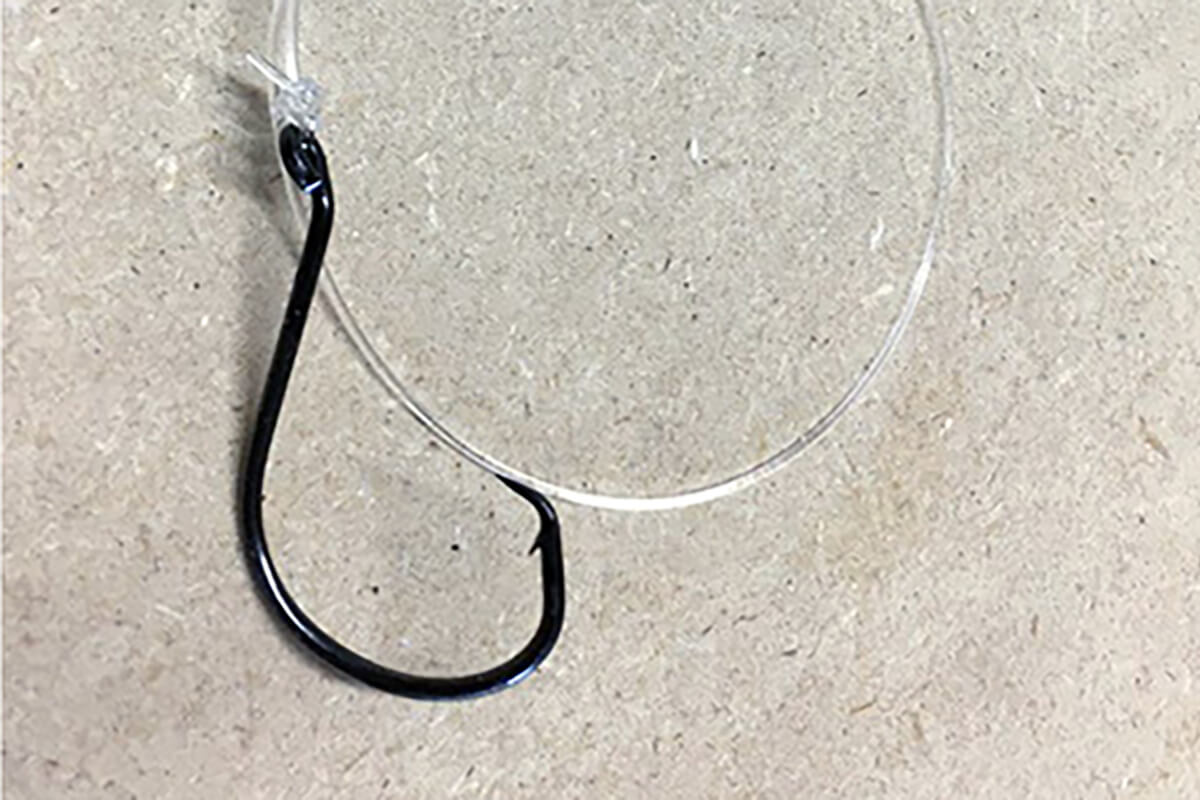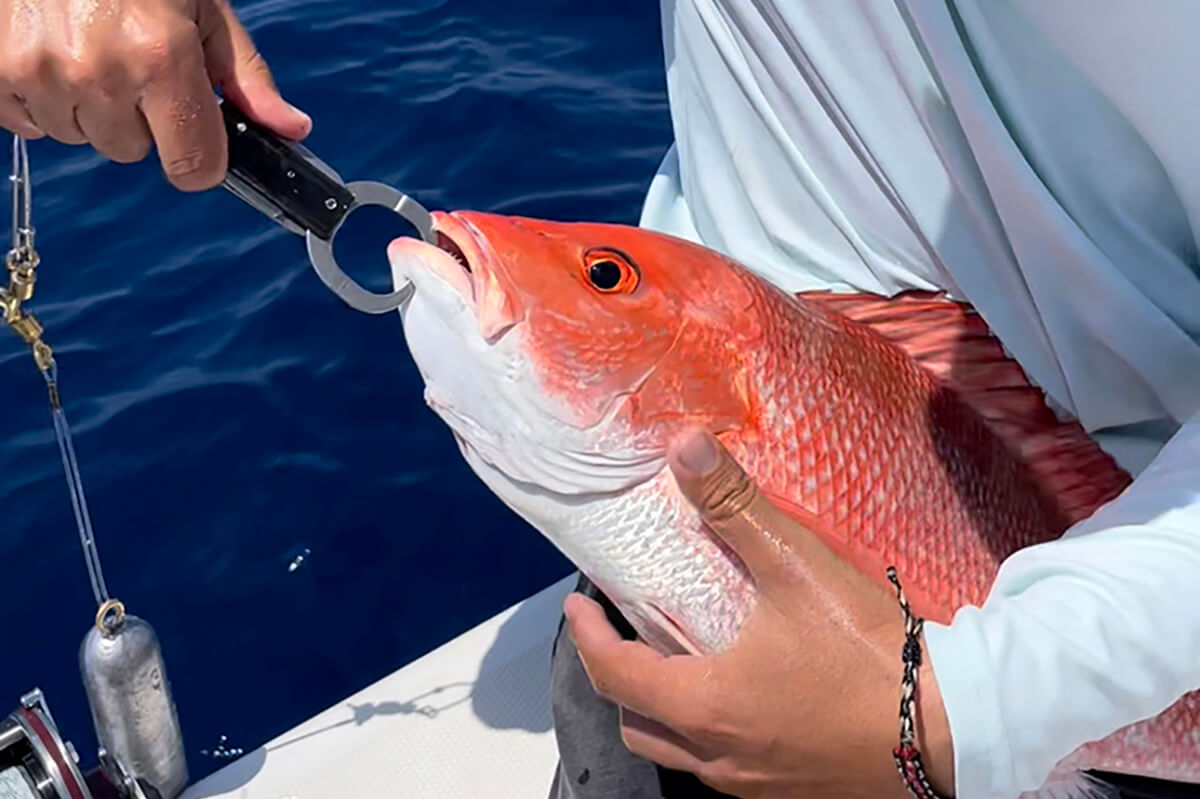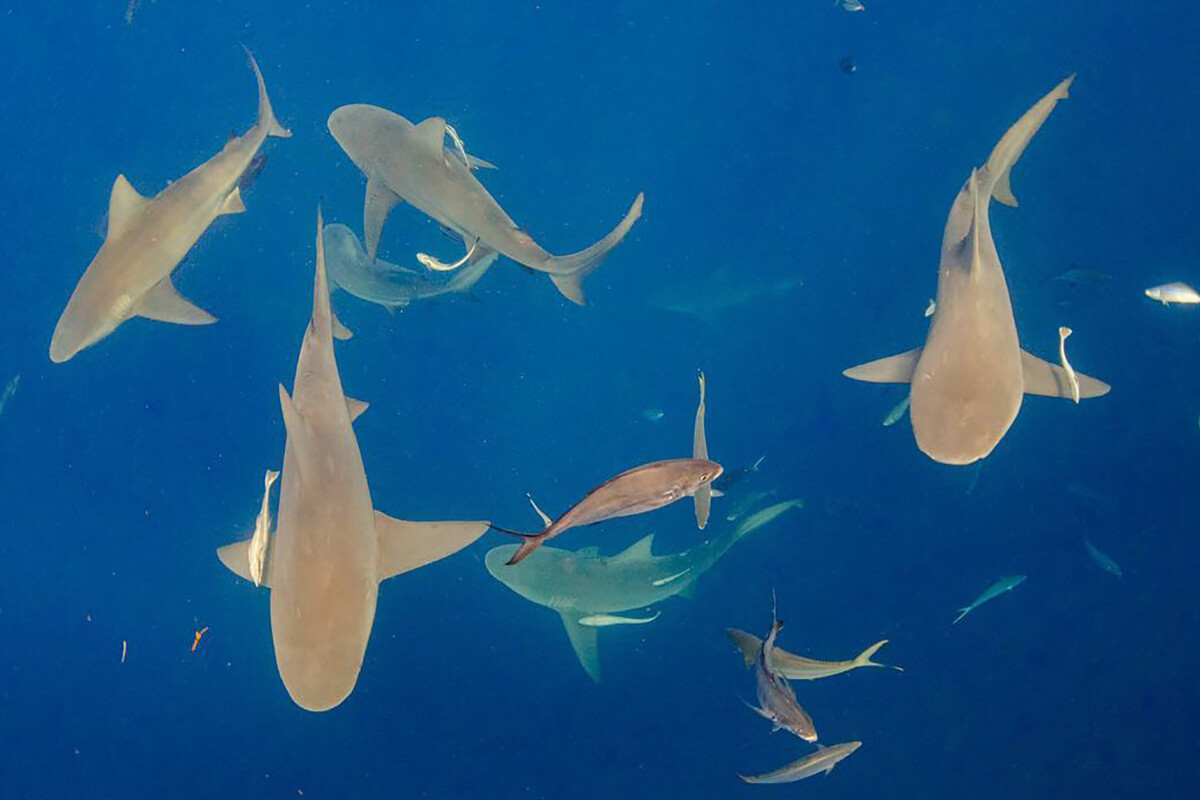Here’s how bonefish and other flats-burners should be held for release. In a colorful twist, this angler caught a mutton snapper up shallow. Snappers in deep water may require special recovery techniques.
November 01, 2022
Catch a fish you don’t plan to eat? Maybe it’s out of season? Not of legal size? Maybe something exciting but inedible, like a ladyfish? You should do everything in your power to increase its chances of survival once released. There’s more to it than just “throwing it back.”
It all starts with your tackle. Responsible anglers know that using tackle too light for the quarry only results in longer battles, and no matter how much care you give your catch after you remove the hook, it may swim off to die later, fall victim to a predator, or not swim away at all. So whenever possible, tackle up for the task and then take the fight to the fish. Get it in quickly. I think large species like tarpon, billfish or sharks that struggle mightily for more than 20 minutes are in grave danger of dying. During a good beach tarpon bite around minnow pods this summer on the Treasure Coast, quite a few dead tarpon in the 60- to 100-pound class washed up on the beaches. And quite a few anglers pursuing them were into one-hour-plus fights with light tackle. In water nearly 90 degrees. Beach tarpon fight hard in that deeper, highly oxygenated water, and when anglers hold them for group shots with buddies for social media fame, well… dead fish. And it’s anyone’s guess how many swim off to be devoured by sharks. For the welfare of the fish, it is unlawful in Florida to take a tarpon of over 40 inches out of the water, unless the angler has a tarpon tag.
If your catch loses equilibrium boatside or at your feet, take the time to revive it until it can swim upright. Keep your hands wet to protect the fish’s slime coat.
Other hard-fighting fish such as bonefish and permit can succumb to exhaustion due to their long, repeated runs once hooked. Anglers tend to use light gear and light line for them, for ease of presentation with light baits and lures. And fly fishers have a tendency at times to use very light rods, sometimes under the 8-weight class. But fish hooked in hot summer water are at risk. Short fight times are key if the bone is to survive. If your catch loses equilibrium boatside or at your feet if wading, take the time to revive it until it can swim upright. Keep your hands wet to protect the fish’s slime coat. Should sharks home in, motor away slowly with the fish in the water and release it a bit out of the area. Too many fish get taken by sharks upon release, in Florida and especially the Bahamas.

The Bonefish & Tarpon Trust organization recommends the following for bonefish:
- Avoid exposing bonefish to the air, even when taking a photo.
- Do not touch the gills. That can cause damage and impair the fish’s ability to respirate.
- Nets, lip-gripping devices and wet cloths can cause injury to the fish.
- If you must photograph a bonefish, limit out-of-the-water time to 10 or 15 seconds. These measures are worth applying to any fish you plan to release, although soft nets and grippers are definitely advisable for spiny, toothy, or sharp-plated catches.
OTHER GOOD MEASURES TO FOLLOW INCLUDE:

The use of a circle hook when bait fishing. That cuts down on the “surgery time” to remove it. Hookups are normally in the corner of the mouth rather than deep in the throat. Use a jaw-clamping device to secure the fish in the water while you remove the hook. And please do not hang that fish by that device. Fish of any size are not built to support their own weight out of water. That is fact! Give your fish ample time to recover boatside or at your feet before sending it back.
Handle fish with wet hands to reduce the removal of its protective slime that shields it from infection and aids in swimming. If you are surf fishing, walk down to the beach wash to land a fish. Do not drag an unwanted catch across the sand—it damages that slime coat, too. Unhook it without grasping it tightly. I have caught undersized pompano, whiting and bonefish on the beach that had the actual “prints” of human fingers across the body.
If you fish from bridges, piers or jetties, come prepared with gear to minimize damage to fish out of season or those not of legal size. Those hard structures are fish-killers if a fish is dropped or dragged. Use a hoop net to bring fish up to the structure. If illegal to keep, unhook the fish in the net and lower it back for release. Jetty anglers should be armed with stout, long-handled nets that prevent their fish from falling on the rocks. I have seen anglers fall and hurt themselves while trying to land a snook or tarpon without a net or assistant. High ocean piers are not the place to “throw back” your catch. A fish landing on the water from 30 or 40 or more feet is a dead fish, or a stunned fish that be “sharked” for sure.
DEEP CATCH DEVICES

Fish caught in deep water and released call for additional care to ensure survival. Snappers and groupers have a gas-filled organ called a swim bladder that controls buoyancy and allows the fish to stay at a certain depth. Fish reeled up from water deeper than 50 feet are subject to pressure change that can cause the gas in the swim bladder to expand and in some cases even rupture. The term for this is barotrauma.
Video That May Interest You
Fish suffering from barotrauma are unable to swim back down to capture depth, making it difficult to survive the elements and avoid predators.
If you plan to release a fish that displays a stomach protruding from the mouth do not puncture or push the stomach back in. When the fish swims back down to depth it will re-ingest its stomach. Return the fish to the water as soon as possible and revive the fish by moving it forward in the water, allowing water to pass over the gills.
Since July 15, 2020 all recreational, commercial, and for-hire vessels have been required to have a working descending device on-board and readily available when fishing for any of the fish in the snapper-grouper fishery management unit in federal waters of the Atlantic Ocean from North Carolina to Florida.
Descending gear has proved to be effective at getting fish back down to depth, minimizing the effects of barotrauma.
In the Florida Keys, any vessel fishing for reef fish in the South Atlantic is required to possess descending gear when fishing greater than 3 nautical miles offshore all the way through the Dry Tortugas. Fish may be released using a fishing pole or hand-line with a descending device attached to a minimum 16-ounce weight, or a weighted container, with at least 60 feet of line that is capable of returning fish back to a depth of at least 50 feet. The South Atlantic Fishery Management Council has examples of descending devices and a video to make your own using a weighted barbless hook at https://safmc.net/best-fishing-practices/.
NOAA Fisheries recommends using descending devices on any fish exhibiting signs of barotrauma. Understand that the new regulation does not prohibit the use of venting tools, but a descending device must be on board and readily available for use. Other than the protruding stomach, signs of barotrauma can include bulging eyes and distended intestines. Descending devices use a weight to return the fish to depth, which re-compresses the expanded gas and reverses the effects of barotrauma. Descending gear has proved to be effective at getting fish back down to depth, and this increases survival rates by minimizing the effects of barotrauma.
The snapper-grouper fishery management unit includes not only snappers and groupers, but popular food fish like amberjack, black seabass, triggerfish, and tilefish. More than half of recreational fish are caught and released alive, so it reasons that use of descending gear can increase the number of fish that survive to be caught again at legal size or when in season. Fisheries research also shows that descending gear reduces predation on “floaters,” those released fish that float on the surface due to inflation. They are often eaten by birds, dolphins and sharks as they struggle to return to deeper water. Visit the Florida Sea Grant Catch and Release website at catchandrelease.org or call the UF/IFAS Monroe County Extension at 305- 292-4502 for further information on descending devices, which can include mouth clamps, inverted hooks and milk crates.
The Predator Conundrum

If you end up feeding your hookups to sharks, Goliath grouper or porpoises, fish somewhere else, please. If you lose a regulated fish this way, it should count against your limit, if you look upon it ethically. It is the subject of hot debate all over Florida. Many anglers blame the “overpopulation” of sharks, which can be argued further; or shark-feeding operations, which may condition sharks to come to the dinner bell; or porpoises, you name it. Rarely will you hear anglers say maybe our predictable behaviors are part of the problem. Many bag limits are being decreased as of late, on quality table species that fall victim to predators when released to “get bigger.” They rarely get bigger when released exhausted over wrecks and fishy features that hold the entire food chain. And if the fishing spot sees a lot of chumming, that only puts released fish more at risk. You just have to use discretion if you hope to see the fishery survive. FS
Florida Sportsman Magazine November 2020
Credit: Source link































